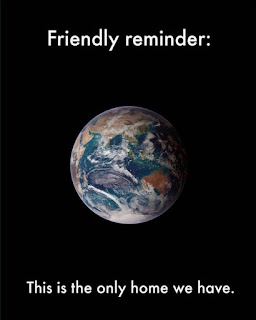 |
| Sculpture trail in a local forest |
It’s the same jaded headline we see every year. By now you’re probably fed up with all the TV and radio programmes, the facebook advertisements, the endless barrage of good ideas for a new ‘you’ this year. Just follow the latest diet, cooking method, exercise regime, celebrity cure and miraculously you’ll be fitter, thinner, healthier, all without any effort, leading us to feel guilty for not trying! Even worse, the dark, damp days of winter can be particularly depressing making these suggestions even more unhelpful.
The fact is you probably already know what to do to feel better, and it’s not difficult. Just think of things that make you smile or create a sense of wonder. Things like watching a glorious sunset or a kestrel hovering at the side of the road, the smell of fresh mown grass or the sound of laughter, the touch of of cold on your face during that post-Xmas walk. Making the effort to notice, to engage with our senses can help us to let go of the constant bombardment of thoughts that seem to overtake us as we enter each New Year. I should start to run, I should join a gym, I should eat less. While all these may be true, practising ‘shouldism’ isn’t helpful and that’s why our New Year’s resolutions tend to be short-lived.
 |
| Curlew spotted amongst the rocks |
One answer is to commit to noticing, to enjoying, what is actually around us, much of it totally free, just open the door and go outside. There has been much publicity about ‘Nature Deficit Disorder[1]’ mainly in relation to children and especially considering time spent outdoors or in front of computer screens. But it’s not just our kids we need to worry about, it’s us too. We’re in danger of many so-called ‘life style’ conditions, from obesity to heart disease, diabetes and strokes. While the evidence may be unclear about the role of genetics and other factors it is clear that we are increasingly showing the signs of anxiety, stress and other disorders linked to how we choose to live our lives.
We need to watch less reality TV and get out into the reality that surrounds us, the real world that is all around us. Whether local mountains, fells and lakes, to the forests, woodland and beaches. From your local country or urban parks, to canals and even public areas such as common land and cemeteries. All present us with the opportunity to get outside, be in fresh air rather than traffic fumes, get some exercise no matter how gentle, and to appreciate there’s more to life than immediately answering emails and constantly posting your latest sandwich choices to facebook.
Science tells us we have developed to be connected to nature, it’s how we know where and when to grow food, what the weather will do, even what time of day it is. We learned to be attentive to changes in the seasons, to movement, to threats and to things that bring pleasure. This attentiveness or attention comes in different forms, we can choose to pay attention, such as when we are trying to complete a piece of work, this directed attention can require lots of effort and wears us down over time. We also have a built in mechanism to simply notice what’s around us. This involuntary attention requires no effort, hence why we can be easily distracted, but we can use this and directed attention when we go outside, into the natural world we are after all part of.
Involuntary attention helps us notice things, such as the geese flying overhead, the warmth of the sun, the stars in the night sky. We can then engage with these things, directing our attention to them, noticing how we feel. By getting outside and doing these we can let go of the things that were stressing us, even if only for a short time. Again the evidence is that contact with nature can lower pulse rates, reduce cortisol levels, and improve our immune systems. So what to do next?
Start by just getting outside the house and looking around. See if you can notice something you haven’t seen before. As you pause for a while notice your breathing. Try finding a ‘sit spot’. This is somewhere you can visit on a regular basis, a park bench, somewhere to sit on a path, even a quiet bus stop or pulling the car into a lay-by where you can appreciate the view. A sit spot is a place where you feel safe to stop and notice not only what is around you, but also how you feel when you stop. When your ‘to do’ list is put on hold for a few minutes and you give yourself permission to simply be still.
 |
| Volunteers on a beach clean |
If you are able go for a walk, a cycle ride even better (perhaps to get to your ‘sit spot’). But it isn’t just about exercise, there are other opportunities to get outdoors too. Try volunteering, there are many action groups, horticultural, litter picking, wildlife and other groups. All provide the opportunity to be outdoors, getting fresh air, enjoying some peace and are all free. Even better you get the added satisfaction of seeing other things flourish, having a sense of achievement. A version of this blog focused in the South Lakeland Peninsula of Cumbria is available here







